 Facebook
Facebook
 X
X
 Instagram
Instagram
 TikTok
TikTok
 Youtube
Youtube
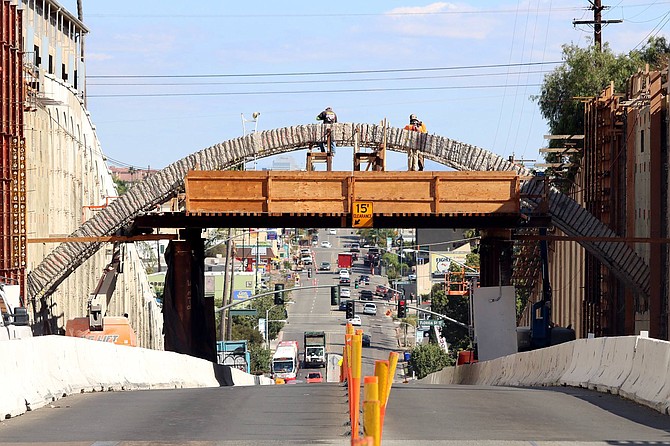
Restoration of the 103-year-old Georgia Street Bridge began in August 2016 with a completion date of about now. Anyone driving past the site can't help but notice it doesn't look anywhere close to being done.
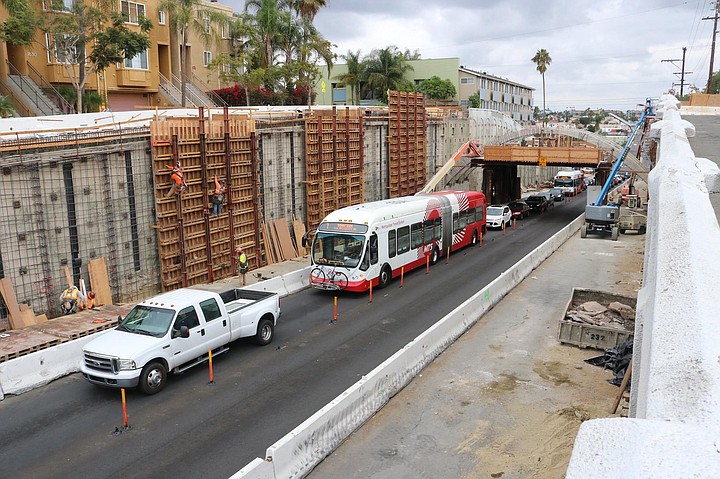
The arched bridge is no stranger to delays. The restoration slated to begin in 2015 was delayed due to funding issues. In the 1990s, the powers-that-be were toying with demolishing the bridge. Public outcry led to historic designation in 1994 — designation that didn't put the kibosh on talks of demolition by the city.
René Vidales, chair of the North Park planning committee, said the city told him the project is at least eight months behind schedule. "I am not surprised of the delays, because we are talking about retrofitting structures that are over 100 years old. I say ‘structures’ because we are not just talking about the bridge, but also talking about the retaining walls that extend from Park Boulevard to Florida Street on both sides of University Avenue that are projects by themselves.
"While retrofitting existing structures, it’s not surprising they may encounter unexpected surprises that are causing delays, from soil conditions to drilling issues, plus we are already in the rainy season for a second time in this project."
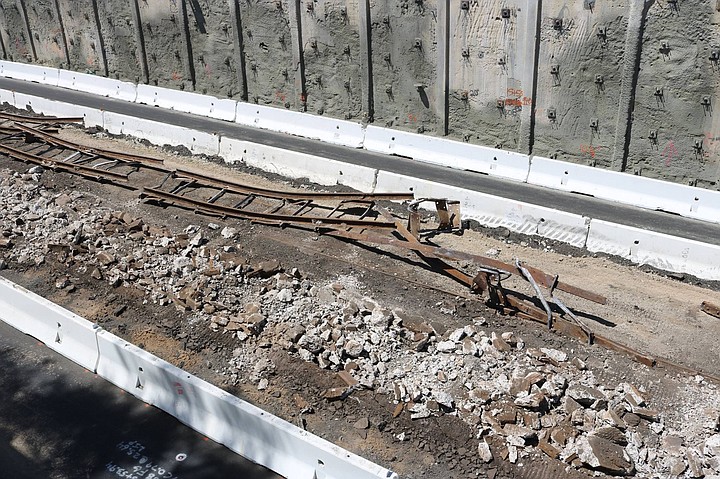
One day on his way to work, Vidales saw old tracks that had been unearthed at the construction site. He took pictures and posted them on social media. He said they "started the conversation on how people feel about bringing back the streetcars."
When the project is completed (new deadline is spring 2018), Vidales said, “It will display its full glory just like when it was originally inaugurated in 1914, including the street lighting that’s been missing for decades."
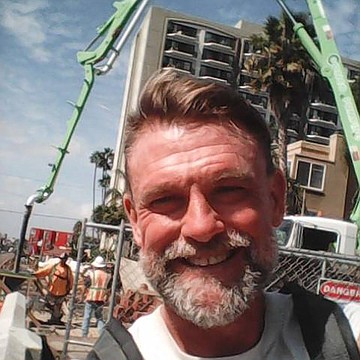
Vidales pointed to the historic designation as the key to being able to qualify for $12 million in federal funding (total budget is $14 million).
Gregory May is a local who has been documenting the bridge's restoration since it broke ground last summer. He has taken thousands of photographs and some videos. Since he is there every day, I asked for his take on the delays.
"I talked to the main guy," said May. "The fact that the traffic goes right through the middle of their construction site, it causes them a lot of trouble. It's in the way all the time. They have to work around that traffic….
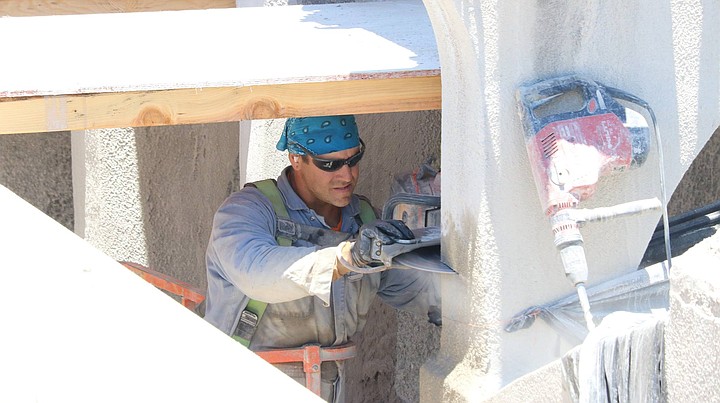
"The other thing that has made it take so long is the three arches inside the bridge. They had to save them to get federal funding. We aren't even going to see them when they're done. They'll be covered up with a new level of cement. I went there every night and filmed them cutting out little pieces to save those three arches. They should have just imploded the whole thing — that would have only taken a week. Instead it took weeks and weeks of work so they could say they were saving the bridge by saving those three arches. It's like the Coronado Bridge. They made it longer so they could get funding. It's the same kind of swindle."
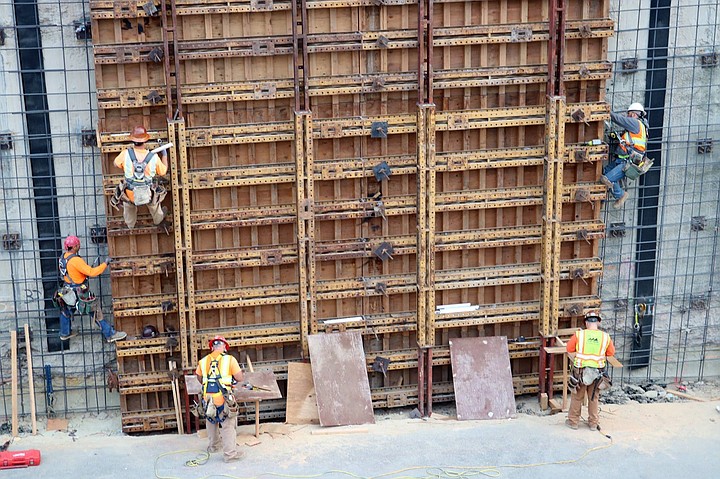
Some who have viewed May's photo documentation on social media have commented that it looks like a full demolition to them. May said the only thing left from the original bridge are those three arches.
"I have seen workers being told to redo things,” said May. “They seem to be on top of everything to make sure it's correct. Inspectors are there every day. It's going to be quality when it's finished. I've been there every day to see the painstaking attention to detail. Then I see the guy that's the boss, older guy, you can tell he's the one having panic attacks out there because everything rests on him. He doesn't have to get his hands dirty, but he's still out there."
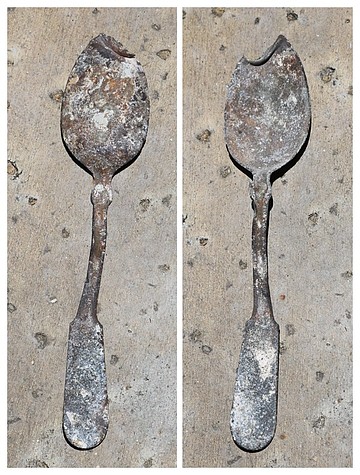
May said he hasn't heard much complaining from nearby residents for a long time — not since the night work ceased once they were done with demolition.
Did May see crews uncover anything unexpected? "A spoon. When they were breaking the bridge apart, they found this old spoon and they gave it to me." May said he was also given several old railroad ties. "They found two sets of tracks [streetcar and railroad] when they lowered the road. The older track [railroad] had wood planks. I wanted a piece of the rail but it was too big, so they gave me eight or nine nails that tied to the wood planks."
I asked May how the workers take him being there every day taking photos and videos of them. "They are used to me being there. I'm having trouble with one rebar guy; he doesn't like his picture being taken and another guy is kind of bored with me being there."
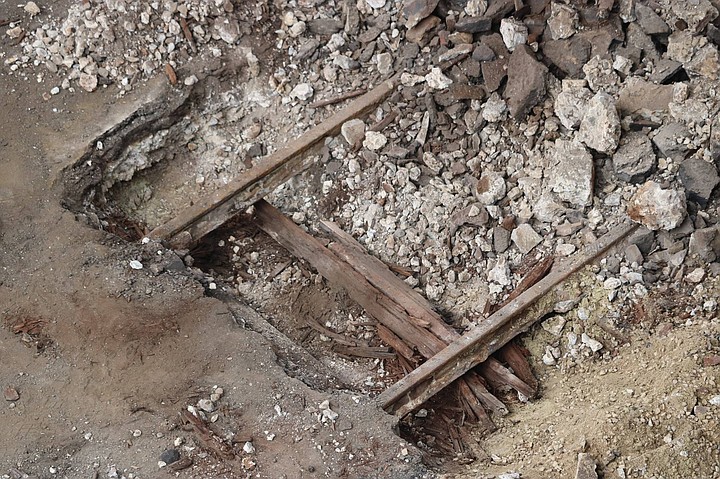
May has his own issues with his documentary project. "If I knew how much this would absorb my life I wouldn't have started it. I'm miserable, but I can't just quit in the middle of it now. I go back every day — it's really a job now. I lost a couple of dog-walking jobs because I would miss this or that at the work site. It started as a casual thing but I got pulled in more and more as I became more aware of what they were doing. It's a curse now."
May said he would like to do something with all the images once the bridge is completed.
Documenting local history isn't new for May. His Vintage San Diego Facebook page showcases historic images of San Diego.
"What fuels me a little with this project is the idea of pictures that I've discovered that were taken 50 years ago. People have been kind enough to donate old slides and photos they find at estate sales."


Restoration of the 103-year-old Georgia Street Bridge began in August 2016 with a completion date of about now. Anyone driving past the site can't help but notice it doesn't look anywhere close to being done.

The arched bridge is no stranger to delays. The restoration slated to begin in 2015 was delayed due to funding issues. In the 1990s, the powers-that-be were toying with demolishing the bridge. Public outcry led to historic designation in 1994 — designation that didn't put the kibosh on talks of demolition by the city.
René Vidales, chair of the North Park planning committee, said the city told him the project is at least eight months behind schedule. "I am not surprised of the delays, because we are talking about retrofitting structures that are over 100 years old. I say ‘structures’ because we are not just talking about the bridge, but also talking about the retaining walls that extend from Park Boulevard to Florida Street on both sides of University Avenue that are projects by themselves.
"While retrofitting existing structures, it’s not surprising they may encounter unexpected surprises that are causing delays, from soil conditions to drilling issues, plus we are already in the rainy season for a second time in this project."

One day on his way to work, Vidales saw old tracks that had been unearthed at the construction site. He took pictures and posted them on social media. He said they "started the conversation on how people feel about bringing back the streetcars."
When the project is completed (new deadline is spring 2018), Vidales said, “It will display its full glory just like when it was originally inaugurated in 1914, including the street lighting that’s been missing for decades."

Vidales pointed to the historic designation as the key to being able to qualify for $12 million in federal funding (total budget is $14 million).
Gregory May is a local who has been documenting the bridge's restoration since it broke ground last summer. He has taken thousands of photographs and some videos. Since he is there every day, I asked for his take on the delays.
"I talked to the main guy," said May. "The fact that the traffic goes right through the middle of their construction site, it causes them a lot of trouble. It's in the way all the time. They have to work around that traffic….

"The other thing that has made it take so long is the three arches inside the bridge. They had to save them to get federal funding. We aren't even going to see them when they're done. They'll be covered up with a new level of cement. I went there every night and filmed them cutting out little pieces to save those three arches. They should have just imploded the whole thing — that would have only taken a week. Instead it took weeks and weeks of work so they could say they were saving the bridge by saving those three arches. It's like the Coronado Bridge. They made it longer so they could get funding. It's the same kind of swindle."

Some who have viewed May's photo documentation on social media have commented that it looks like a full demolition to them. May said the only thing left from the original bridge are those three arches.
"I have seen workers being told to redo things,” said May. “They seem to be on top of everything to make sure it's correct. Inspectors are there every day. It's going to be quality when it's finished. I've been there every day to see the painstaking attention to detail. Then I see the guy that's the boss, older guy, you can tell he's the one having panic attacks out there because everything rests on him. He doesn't have to get his hands dirty, but he's still out there."

May said he hasn't heard much complaining from nearby residents for a long time — not since the night work ceased once they were done with demolition.
Did May see crews uncover anything unexpected? "A spoon. When they were breaking the bridge apart, they found this old spoon and they gave it to me." May said he was also given several old railroad ties. "They found two sets of tracks [streetcar and railroad] when they lowered the road. The older track [railroad] had wood planks. I wanted a piece of the rail but it was too big, so they gave me eight or nine nails that tied to the wood planks."
I asked May how the workers take him being there every day taking photos and videos of them. "They are used to me being there. I'm having trouble with one rebar guy; he doesn't like his picture being taken and another guy is kind of bored with me being there."

May has his own issues with his documentary project. "If I knew how much this would absorb my life I wouldn't have started it. I'm miserable, but I can't just quit in the middle of it now. I go back every day — it's really a job now. I lost a couple of dog-walking jobs because I would miss this or that at the work site. It started as a casual thing but I got pulled in more and more as I became more aware of what they were doing. It's a curse now."
May said he would like to do something with all the images once the bridge is completed.
Documenting local history isn't new for May. His Vintage San Diego Facebook page showcases historic images of San Diego.
"What fuels me a little with this project is the idea of pictures that I've discovered that were taken 50 years ago. People have been kind enough to donate old slides and photos they find at estate sales."
Comments